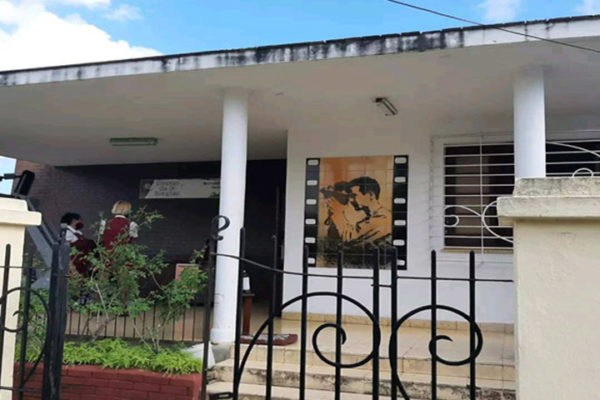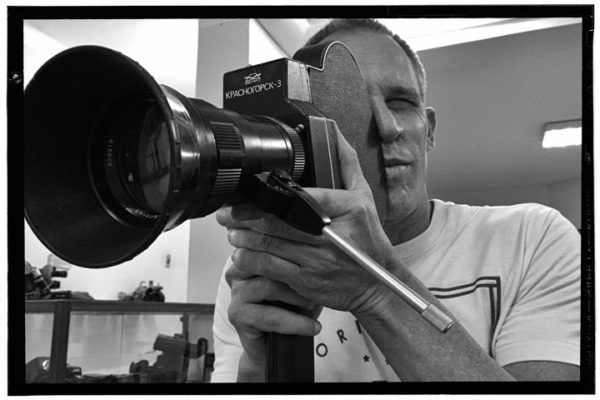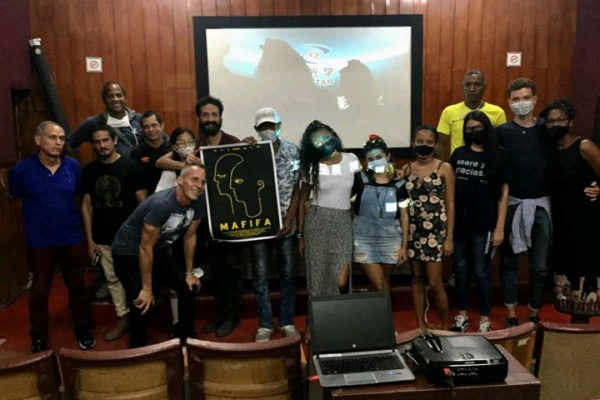Santiago de Cuba Museum Conserves Cuba’s Audiovisual History

Interview with Demian Rabilero, director of the Museum of Image and Sound, in Santiago de Cuba, the only one of its kind in the country.
By Erian Peña Pupo (IPS)
HAVANA TIMES – Created in the 1970s by cameraman and documentary maker Bernabe (Bebo) Muñiz Guibernau, and made official as an institution on March 20th 1992, the Museo de la Imagen y el Sonido in Santiago de Cuba, is celebrating its thirtieth anniversary with an audiovisual week that includes several premieres of national productions.
On the anniversary day, short movies Tundra, by Jose Luis Aparicio; and Insecto, by Jose Armando Estrada; as well as the documentary Mafifa, by Daniela Muñoz Barroso, will be shown. Screenings also include the short movies El Rodeo, by Carlos Melian; and La noria, by Daniel Ross; and documentaries Los Puros, by Carla Valdes Leon; and Mujeres en dos tiempos, by Yasmani Castro.
“Without being a museographer, Bebo created the pillars of this Museum as a living and interactive space, out of sheer intuition and passion. But not interactivity understood as a button on a touchscreen, rather as the relationship formed between the visitor and institution,” says its director Demian Rabilero, who is also a poet and editor.
The museum’s different rooms showcase objects linked to the evolution of photography, filmmaking, radio and TV. Furthermore, it is a space for movie screenings, workshops and theoretical exchanges, that prioritize safeguarding the country’s audiovisual memory and identity.
Bebo Muñiz’s legacy
EPP: What makes the Museum of Image and Sound stand out?
DR: It was created with Bebo Muñiz’s hard work and dedication, linked to our cinematography and TV since the 1930s, and there is still a debt today as there aren’t any studies on his contribution to the audiovisual world in Cuba.
The Museum faded out a little after his death in 2000, and because of many other factors. But today, there is a vocation to rescue and conserve this legacy and vision, amidst these turbulent times.
When founding it, he just called it the Museum of Image. Now “and Sound” has been added, based on the fact that it’s essential in film and TV, and can also bring in radio (which makes it stand out from others in the world). This was the work of filmmaker Santiago Alvarez, Bebo’s friend and accomplice in creating the Museum.

In order to do this, Bebo managed to convince many people to invest in its creation during different periods, from historian Arturo Agramonte to General Roberto Valdes.
Objects linked to the evolution of photography, filmmaking, radio and TV, are displayed in its rooms… What strategies do you have to conserve works – film expires very quickly – and for the public’s technological interaction with them?
DR: There is a strategy, it’s resources we don’t have. There are several cameras that need to be urgently repaired but repairing them won’t be any good if we can’t them conserve them. This year, we managed to build a glass display cabinet that broke before I arrived at the Museum, and where most of the cameras we have in the storeroom are kept. Now, we’ll try and get them fixed.
We keep materials in the film vault, some of which have great value, such as Bebo’s documentary about the expedition to Cayo Confites; but it’s more difficult and expensive. The Museum’s former director made progress in coordinating efforts with the Cuban Institute of Cinematographic Art and Industry (ICAIC) and the National Union of Cuban Historians; and some of this material was digitalized, but then COVID-19 came along…
Anyway, people come along and we’ve built a network to get projetors working again, to digitalize photos and all because of their love for art, or better yet, their love for our heritage.
A museum for the Cuban people
How are new works handed over to the Museum’s collection?
DR: We have a tight budget, so buying is the exception. We’ve received very important donations in the past couple of years. During a time when many people’s premise is to sell, others have donated cameras to a slide with Russian cartoons.
Our bibliographical collection has also grown. This has been harder to do with institutions, who throw out what was of no worth to them, but is heritage to us.

Which objects are the most important or hardest to find, these rara avis that museums are proud of and attract attention for some reason?
DR: We have a camera that is possibly the smallest from the analogic era, and one of the first movie camerias, and the projector where 500 editions of ICAIC’s Latin American news broadcast were edited, or some of the first TV cameras that came to Cuba.
Of course, it’s nice to have a camera that belonged to Rafael Lezcano (which we have), or a Korda (which we don’t). But at this point in time, I’m rejecting the fetishism of the object and a household camera with photos taken by people without any public fame in their home, can have an even greater impact on the viewer at times (because of the emotions it evokes) instead of a photo taken by a renowned professional.
This is what studies we’ve carried out have shown us for future curatorial projects, without giving up fundamental pillars such as collections.
Memory and identity are two important terms for the Museum…
DR: We are a museum for the Cuban people. Handling these terms requires dedication and study, there’s no room for improvisation. Life and people are the most important things; this was never a museum for the elite, but has always been an inclusive, breathing, dialectal space.
Nothing can be harder than creating a museum
A documentary series called El Museo de Bebo is currently being filmed…
DR: It’s a very modest series technologically-speaking, recorded on my cellphone, an iPhone 6 with a battery that runs out really quickly. It’s a kind of investigation into the origins and stages of the Museum, where we collect anecdotes and track documents.
The other option was to lose certain testimonies because we didn’t have the technology we needed. We’ve recorded four episodes; I’m not giving excuses but it’s stopped for now…
On the Museum’s 30th anniversary, Bebo’s former employees and collaborators will be present and it will be a golden opportunity to film the fifth episode of the series, dedicated to the inauguration of the Museum where it stands today, which luckily we have photos of, with Santiago Alvarez in them too.
The series can be seen on the Santiago de Cuba’s Provincial Center of Cultural Heritage YouTube channel. I’m directing it, of course.
How does the Museum fit into Santiago de Cuba’s cultural landscape?
DR: You get dizzy sometimes and think you’ve not done anything. But looking back, when I began to work here as a leading expert in October 2018, and then I was named director in March 2020, you realize that work was done and that you’ve grown on a personal level.
We can start planning for the future again and we have held documentary workshops, offered by people who have such big hearts that they haven’t charged for this service, such as Daniel Diez Castrillo, founder of TV Serrana and one of our advocates, or young filmmakers such as Alejandro Alonso and Daniela Muñoz Barroso.
We have seen our collections grow. We hold a literary circle on the third Thursday of every month, which has been a great success, where young people are an active and key part and share their poetry, music, act…
Dreams are becoming reality and, when everything comes to a grinding halt, I remember what my direct superior, Suitberto Frutos, used to tell me: “Nothing is harder than what Bebo did: creating a museum.”





